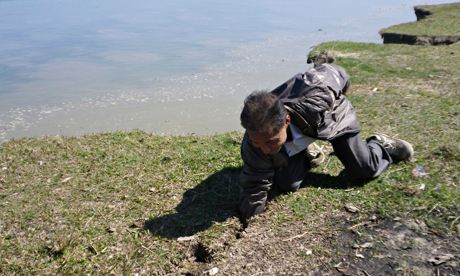By Adam Halliday
Aizawl, Mar 27 : Mizoram has made an entry into India’s archaeological map. In a first, the Ministry of Culture has declared a 9,000 sq m area dotted with several caves, and more than a hundred menhirs embossed with figures of humans, animals and weapons as an ancient site of national importance.
Some 170 menhirs, each at least as tall as a man, stand at the site at Champhai district’s Vangchhia village, which lies on the bank of the Tiau river that separates India and Myanmar.
Villagers call the site “Kawtchhuah Ropui” (The Great Gateway) and have protected these monuments for years in spite of not being sure what they represent or how they came to be there.
The Mizoram chapter of the Indian National Trust for Art and Cultural Heritage (INTACH) along with the state’s Art & Culture Separtment has been studying the menhirs, seeking help from the Archaelogical Survey of India (ASI) in interpreting the embossing.
There has been no significant breakthrough yet, either in reading the carvings or in understanding why the menhirs are there.
The ministry’s notification declares the menhirs, as well as the ground on which they stand, the surrounding caves and forest as protected.
INTACH is hopeful that studies on the menhirs and the figures on them will shed more light on the history of the Mizos, much of which was never documented. The community followed an unwritten, oral tradition until a script was developed a little over a century ago.
Menhirs with similar images have also been found in parts of eastern Mizoram including at Chawngtlai village near Khawzawl town and, according to Mizo historian B Lalthangliana, in the Chin Hills of Myanmar.
Aizawl, Mar 27 : Mizoram has made an entry into India’s archaeological map. In a first, the Ministry of Culture has declared a 9,000 sq m area dotted with several caves, and more than a hundred menhirs embossed with figures of humans, animals and weapons as an ancient site of national importance.
Some 170 menhirs, each at least as tall as a man, stand at the site at Champhai district’s Vangchhia village, which lies on the bank of the Tiau river that separates India and Myanmar.
Villagers call the site “Kawtchhuah Ropui” (The Great Gateway) and have protected these monuments for years in spite of not being sure what they represent or how they came to be there.
The Mizoram chapter of the Indian National Trust for Art and Cultural Heritage (INTACH) along with the state’s Art & Culture Separtment has been studying the menhirs, seeking help from the Archaelogical Survey of India (ASI) in interpreting the embossing.
There has been no significant breakthrough yet, either in reading the carvings or in understanding why the menhirs are there.
The ministry’s notification declares the menhirs, as well as the ground on which they stand, the surrounding caves and forest as protected.
INTACH is hopeful that studies on the menhirs and the figures on them will shed more light on the history of the Mizos, much of which was never documented. The community followed an unwritten, oral tradition until a script was developed a little over a century ago.
Menhirs with similar images have also been found in parts of eastern Mizoram including at Chawngtlai village near Khawzawl town and, according to Mizo historian B Lalthangliana, in the Chin Hills of Myanmar.














